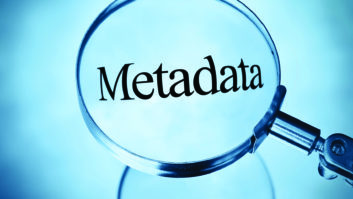Tips on RS-232, serial data, and satellite dish tune-up
Aug 1, 2008 12:00 PM, By John Landry, CSRE

An RS-232 tester quickly identifies the correct signals.
Serial data explained
Even though there are faster and easier ways to connect data devices, many older protocols, particularly RS-232, live on. I have always relied on two things when dealing with RS-232: my LED data tester, and the technical support documents available online from Black Box. A loopback plug is also helpful 25 percent of the time.
The most common reason for an RS-232 link not working is simple: The transmit and receive pins are reversed. A quick check with the data tester will indicate which device is transmitting on which pin. Simply hook the tester up to one device only and note whether pin 2 or 3 is lit on the tester. Then unhook that device and connect to the other device. If the same LED is lit, then the TX and RX pins on one end of the cable will have to be swapped. If handshaking is used, then the CTS/DSR and CD pins will also have to be swapped.
Other data protocols, such as RS-442/485, RS-512, X-21 and V.35, are also commonly found. Similar testers exist for these protocols as well.
A reference of connector pin-outs is available at the Black Box website: www.blackbox.com/Tech_Support/Technical-documents/data-interfaces.aspx

Checking satellite antennas during the Summer is a good idea.
Satellite dish tune-up time!
Summer is a good time to make sure all satellite dishes are in good repair and aligned properly. With expansion and contraction, as well as vibration, the alignment might have changed slightly. Further complicating matters are the new generation satellite receivers, which use smaller (and sometimes weaker) RF signals than the receivers they replaced. If a new receiver has come to your station in a box recently, and it is having reception issues, you probably need a tune-up at the antenna even if your old receivers are working just fine.
Make sure the satellite dish is round by checking two cross measurements. Some fiberglass compounds disintegrate after 20 or so years and can warp. Inspect the feed horn for obstructions and check the support spars to make sure all adjustments are protected against rust. The spars should never require adjustment unless they have rusted and broken. The feed line from the dish inside should be either rigid feed line (Heliax) or quad-shielded weatherproof trunk coax (RG-11). Make sure the short coax jumper to the LNB is in good condition and if necessary, replace or install a waterproof seal around the connectors. Coax-Seal is a putty-like substance designed for this purpose. Another effective method of waterproofing the coax connection is to tightly wrap vinyl tape (such as 3M-33) and apply a coating of clear spray paint to it.
One important point often overlooked is the center of the box date and time. The satellite is not completely stable in orbit and it wobbles around. At specific times it is in the center of this wobble, and that is the correct time to make adjustments. For the most common radio network satellite, AMC-8, the center of box information can be obtained from SES Americon’s website or by calling its operations center. Another important part of dish alignment is accurate reading of the satellite signal level. Most receivers do not give a true time reading of the RF level. The best way to read the signal level is with a spectrum analyzer. Small � turn adjustments can make many decibels of signal change obvious on the analyzer. Another useful way to make this measurement (although not as accurate) is to use an obsolete analog satellite receiver (such as a Scientific Atlanta DATS or 4595 SEDAT receiver). While these receivers no longer decode audio, they will detect RF signal and give you an accurate meter type reading.

When aligning a receive antenna, be sure the satellite is in the center of its orbital location.
Once the satellite dish is peaked in place, lock down any locking hardware, and if possible mark any moving parts for future reference. Also it is a good idea at this time to check the other end. How many receivers are being used? How many times has the signal been split? Less is better and amplified splits are sometimes distorted splits, resulting in lower signal quality readings and sometimes dropouts in the audio.
Landry is an audio maintenance engineer at CBS Radio/Westwood One, New York.
Do you have a tech tip? Send it to us at[email protected]












